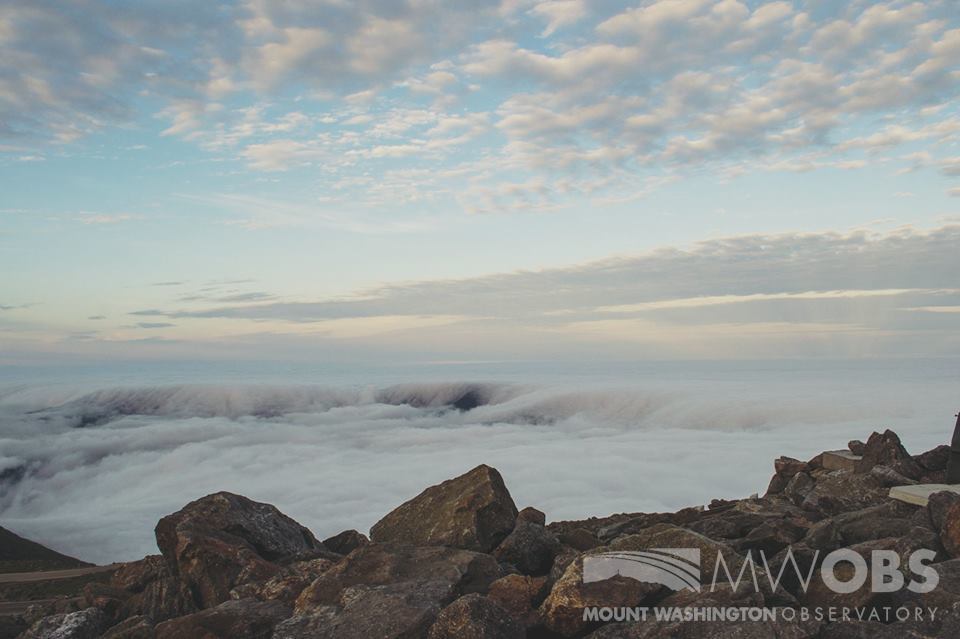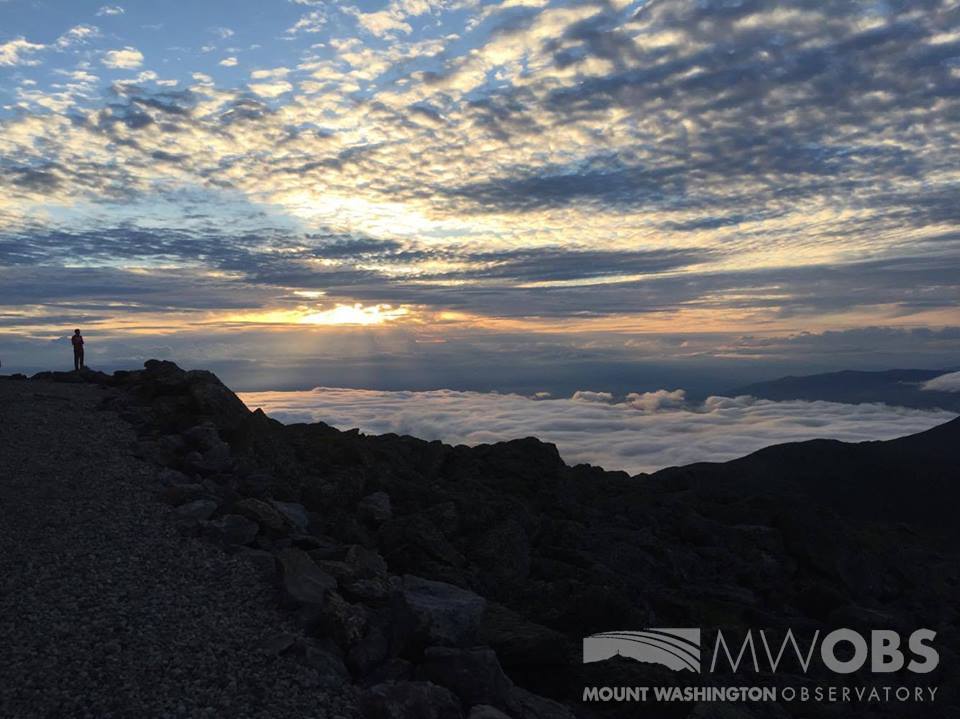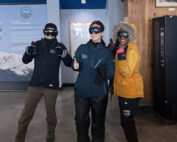Undercast
2016-07-09 17:39:19.000 – Chris Hohman, Summit Intern
My internship so far has given me wonderful experiences not just in meteorology, but in some fantastic views up here. Last night we experienced the greatest I’ve ever seen up here, all thanks to the undercast. Overcast skies can seem very grey and gloomy, but if you find yourself above those clouds, you can see for miles upon miles of clear white. It’s an immaculate view and can give you a wonderful sense of how that atmosphere actually moves like a fluid. If you haven’t already seen, check out our time lapse video of the undercast: https://www.facebook.com/MWObs/?fref=ts you can actually see the clouds moving and colliding just like a fluid. Now if you’re like me I’m sure you’re completely fascinated by this and want to know everything about how it works, so allow me to explain.
To understand why the undercast happens, it’s important to know why clouds form at different points in the sky. I was once told that clouds are flat at the bottom because they’re scraped off by the mountains, after being here for a few weeks, I’ve found that to not be the case unfortunately. Clouds form at what is called the “Lifted Condensation Level” or LCL for short. It is the point in the atmosphere when the temperature of a parcel of air reaches the same temperature as the dew point and condenses into a cloud. This can change and have different rates depending on atmospheric conditions, but this is the main concept. When there is an undercast that just means the LCL is below the summits, giving us the beautiful view in a sea of white.

In this picture the atmosphere experienced what’s called a “Marine Layer.” In essence cold air is heavier and denser than warm air, so the easterly flow of wind we’ve been experiencing pushed cool air off the ocean onto the main land and stayed close to the ground. At the same time warm air aloft was above this Marine Layer, so where the two air masses met in the middle, the warm air reached it’s dew point (due to the low temperature of the marine layer) and condensed into a cloud! Due to the high pressure we had as well, this kept the clouds down the rest of the day, counteracting diurnal heating wanting to push these clouds up.
Pretty fascinating huh?
 (Photo Credit Deb Kerr)
(Photo Credit Deb Kerr)I’ll end this post with a photo of me looking out into the White Sea philosophically. If you have any questions please don’t hesitate to contact us or stop by! By the way, best song to listen to while enjoying the undercast: “Is there life on Mars?” By David Bowie
Chris Hohman, Summit Intern
Team Flags Return for Seek the Peak’s 25th Anniversary
Team Flags Return for Seek the Peak's 25th Anniversary By MWOBS Staff Mount Washington Observatory is looking forward to continuing a much-loved tradition for Seek the Peak’s 25th Anniversary: Team flags. In inviting teams
Meet Summer Interns Zakiya, Max and Maddie
Meet Summer Interns Zakiya, Max and Maddie By MWOBS Staff We are excited to welcome six teammates to the summit of Mount Washington this summer! During their internship, these students and graduates will play
Saying Goodbye to the Summit
Saying Goodbye to the Summit By Alexis George After an extraordinary last three years working as a Weather Observer and Meteorologist, I am excited to pursue a different career. As sad I as am




